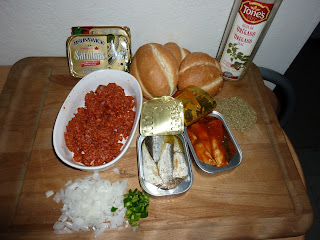Christmas Cakes
 In 1989, shortly after the first presentation of the book Like Water Chocolate , By Laura Esquivel, I had the opportunity to interview on the radio program "Oscillations", broadcast on Radio Network, where Radioprogramas still belonged to Mexico. Unfortunately has neither the recording of the broadcast or photographs, although the book, special edition for the press, which jumped 400. Keep in mind the kindness of Laura from the first phone call I made to invite and during the interview, which flowed naturally and easily, discussing details of the plot, the role of food in his career and something about their plans in the field of letters.
In 1989, shortly after the first presentation of the book Like Water Chocolate , By Laura Esquivel, I had the opportunity to interview on the radio program "Oscillations", broadcast on Radio Network, where Radioprogramas still belonged to Mexico. Unfortunately has neither the recording of the broadcast or photographs, although the book, special edition for the press, which jumped 400. Keep in mind the kindness of Laura from the first phone call I made to invite and during the interview, which flowed naturally and easily, discussing details of the plot, the role of food in his career and something about their plans in the field of letters. I'm not sure if I told the feeling I had when I read the first chapter and I imagined the taste of the "Christmas Cake", I think so because I was impressed how the flavors of sardines and chorizo \u200b\u200btogether came to my mind as if you had already tried this strange preparation.
That end of the year, my friend Marylou Torrescano also partner of the broadcaster, that encouraged me to prepare. We meet at home to do it and they were rich. We do not prepare much, maybe about twenty. Years later, when I started the program on Radio Mil Enjoy!, In September 1994, I looked for Laura to be my first guest, but unfortunately was New York, writing his next novel.
However, to celebrate the airing of the program and I will re Marilu "cakes" and we were much richer.
Since 2003 every year, at the beginning of December, my dear Marilu and other friends we meet early to prepare about 200 pancakes and the other guests arrive at night to be free to work, but for whom the "Christmas cakes "name that is known for year-end meeting of the family, are part of the Christmas tradition. The recipe, as it has in the book, lists the following ingredients:
1 Can sardines
1 / 2 chorizo \u200b\u200b
1 onion Oregano
serrano chiles 1 can
10 teleras
the preparation is talking to throughout the chapter, but in a nutshell is as follows:
"Beware of frying chorizo cakes over very slow, so that in this way is cooked but not brown excessively. As is ready, remove from heat and sardines are incorporated, which previously have been stripped of the skeleton. It is also necessary scraping with a knife with black spots on the skin. Along with sardines mixed onion, chopped peppers and ground oregano. Allow the preparation, before filling the cake. "
She suggests preparing home-baked bread, but if that is not possible is recommended advance ordering in a good bakery for the weavers make them as tiny as possible (in the picture you can tell the difference between a crossbeam and a telerita), because they eat a snack.
After several years of experimenting with the recipe, I suggest that in addition to the onion raw, fry the chorizo \u200b\u200b(pork, chicken or turkey) in half with chopped onion. If you get good quality sausage can also be used, although I think the chorizo \u200b\u200bdo better. I suggest doing a test before making more than ten, to balance the flavors Logar, because if you are prepared with small sausages can dominate the flavor of sardines.
ingredients for my version of "Christmas cakes"
sausage (turkey), sardines with oil and tomato, onion
twice indicating the original recipe, oregano, fresh serrano peppers
marinated and small teleras
If prepared a day earlier, as does Tita, the protagonist of the novel, cover with a damp cloth. Before serving, bake a few minutes to eat warm. If you are served with a green salad of lettuce and spinach, seasoned with a good vinaigrette, taste is enhanced. Adults usually eat three to four young people since November waiting for this feast is eaten during overnight more than five. sausage (turkey), sardines with oil and tomato, onion
twice indicating the original recipe, oregano, fresh serrano peppers
marinated and small teleras
Although the recipe pickled serrano peppers are chopped, adding a rich touch of acidity to the mix, it's a good idea to separate a part without chile (add a few drops of lemon or a splash of vinegar) and place the patties on platters on which indicate the peppers.
If invited to the desktop are encouraged to prepare I would love to leave a comment here and in an article in Suite 101.
Bon appetit!


